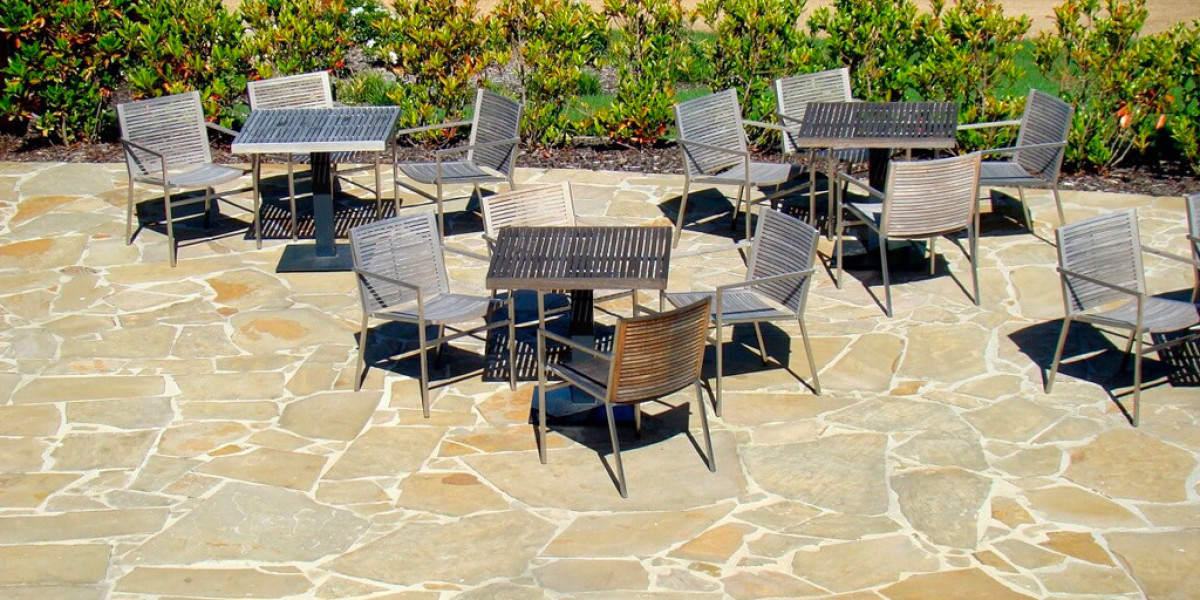When it comes to creating beautiful and functional outdoor spaces, few materials are as timeless and versatile as sandstone. Sandstone pavers are an excellent choice for a variety of applications, from patios to walkways, driveways, and garden paths. Their natural look, durability, and ease of maintenance make them a preferred option for homeowners and landscapers alike. In this article, we’ll explore the advantages of using sandstone pavers, how they complement various design styles, and their different uses in outdoor settings.
Why Choose Sandstone Pavers?
Sandstone is a sedimentary rock composed of sand-sized grains of minerals, rock fragments, or organic materials. It’s available in a variety of colors and textures, making it easy to match your outdoor design vision. Sandstone pavers are crafted from this durable natural stone, offering a beautiful, long-lasting option for your landscaping projects.
Here are several reasons why sandstone pavers are an ideal choice for outdoor spaces:
Durability: Sandstone is known for its exceptional strength, able to withstand harsh weather conditions, making it an excellent material for outdoor use. Whether you're installing a patio or a pathway, sandstone pavers will last for years, with minimal wear and tear.
Aesthetic Appeal: One of the most attractive features of sandstone pavers is their natural beauty. They come in various shades, ranging from warm beige and cream to richer reds and browns. These colors allow homeowners to create harmonious outdoor spaces that complement their existing landscape design.
Slip Resistance: Due to its naturally rough texture, sandstone offers a non-slip surface, making it a safe choice for areas that may be exposed to rain or moisture. This characteristic is especially important for patios, walkways, or pool areas.
Low Maintenance: Sandstone is relatively low-maintenance compared to other materials. It doesn’t require frequent sealing, and regular cleaning with water and a mild detergent is enough to keep it looking great for years.
Uses of Sandstone Pavers
Sandstone pavers are incredibly versatile, offering both functional and aesthetic benefits to any outdoor space. Here are some common uses for sandstone pavers:
1. Patios and Courtyards
Patios are often the focal point of a backyard, providing a place to entertain, relax, and enjoy the outdoors. Sandstone pavers create a stunning, natural look while offering the durability needed for outdoor living spaces. The earthy tones of sandstone complement various furniture styles, from rustic to contemporary, allowing you to create a welcoming atmosphere.
2. Walkways and Pathways
If you're looking to add charm and functionality to your garden or backyard, sandstone pavers make for an ideal material for walkways. They can be laid in a variety of patterns, from classic straight lines to more intricate designs. Their slip-resistant surface makes them a safe choice for pathways, especially in areas prone to moisture.
3. Driveways
While sandstone may not be as common for driveways as other materials like concrete or asphalt, it can still be an excellent option for those looking for a more unique and natural driveway. Sandstone pavers provide a distinctive look, and their durability ensures they can handle the weight of vehicles.
4. Pool Areas
Creating a safe and stylish poolside is easier with sandstone pavers. They are naturally resistant to water and can handle the fluctuations in temperature around pool areas. The non-slip texture of the stone makes it an ideal choice for around the pool, reducing the risk of slipping.
5. Garden Edging
Sandstone can also be used for garden edging, giving your flower beds or vegetable gardens a clean, neat border. Sandstone's natural color blends well with the earth tones of plants and flowers, creating a harmonious look.
Sandstone Capping: The Perfect Finishing Touch
Once you've installed your sandstone pavers, you might want to consider adding sandstone capping to complete your project. Sandstone capping is typically used on walls, garden beds, and fences to provide a smooth, finished edge.
Capping is available in various sizes and shapes, which allows you to achieve a clean, polished look. Not only does it enhance the appearance of your outdoor features, but it also provides added protection to the walls and edges, helping to prevent moisture damage and erosion.
When choosing sandstone capping, make sure it matches the color and texture of your pavers for a seamless transition between your hardscape elements. Sandstone capping is available in multiple colors and textures, allowing you to match the overall look of your outdoor design.
Sandstone Ballast: Strength and Stability
In addition to its aesthetic benefits, sandstone also plays a critical role in providing structural stability. Sandstone ballast is often used in construction and landscaping projects to add weight and provide foundational support. It's particularly useful in areas like retaining walls, pathways, and drainage systems, where additional support is needed.
Sandstone ballast is highly effective in stabilizing loose soil, helping to prevent erosion and shifting. It can also be used to fill gaps and provide a firm base under pavers, ensuring they stay in place over time.
Installation Tips for Sandstone Pavers
While installing sandstone pavers can be a DIY project, it's essential to take your time and follow the correct steps to ensure a successful outcome. Here are some tips for installing sandstone pavers:
Prepare the Ground: Ensure that the area where you’re installing the pavers is level and free of debris. If you’re building a patio or pathway, dig about 4-6 inches deep to create a stable base for the pavers.
Use a Sub-Base: Lay down a layer of crushed stone or gravel as a sub-base. This will provide drainage and ensure that the pavers do not sink or shift over time.
Lay the Pavers: Start laying the sandstone pavers, making sure to leave a small gap (usually about ¼ inch) between each one for proper drainage. Use a rubber mallet to gently tap each paver into place.
Fill the Gaps: Once the pavers are laid, fill the gaps between them with sand or stone dust. Sweep the sand into the gaps and use a compactor to ensure the pavers are secure and stable.
Seal the Pavers: Although sandstone pavers don’t require frequent sealing, applying a natural stone sealer can help protect them from stains and water damage. Be sure to use a sealer that is specifically designed for sandstone.
Caring for Sandstone Pavers
To keep your sandstone pavers looking beautiful for years to come, regular care and maintenance are essential. Here’s how you can maintain your pavers:
Clean Regularly: Use a broom to remove dirt and debris. For deeper cleaning, wash the pavers with water and a mild detergent. Avoid harsh chemicals, as they can damage the stone.
Prevent Stains: Promptly clean up spills, especially oils and acidic substances, as they can stain sandstone. Use a soft cloth to blot any spills, avoiding scrubbing, which can damage the surface.
Reseal When Necessary: Over time, the protective sealer on your pavers may wear off. Resealing the pavers once every few years will keep them looking fresh and prevent moisture damage.
Conclusion
Sandstone pavers are a durable and stylish choice for a wide range of outdoor applications. Their natural beauty, combined with their strength and low-maintenance nature, makes them an excellent investment for any outdoor project. Whether you're designing a new patio, walkway, or garden edge, sandstone pavers provide a timeless, versatile solution. With the added benefits of sandstone capping and ballast, you can ensure both the aesthetic appeal and the structural integrity of your outdoor spaces.
At Maroota Sandstone Quarry, we offer a wide range of high-quality sandstone products, including pavers, capping, and ballast, to help you create the perfect outdoor environment. Whether you’re renovating an existing space or starting from scratch, sandstone is an ideal material to add both beauty and functionality to your landscape.








